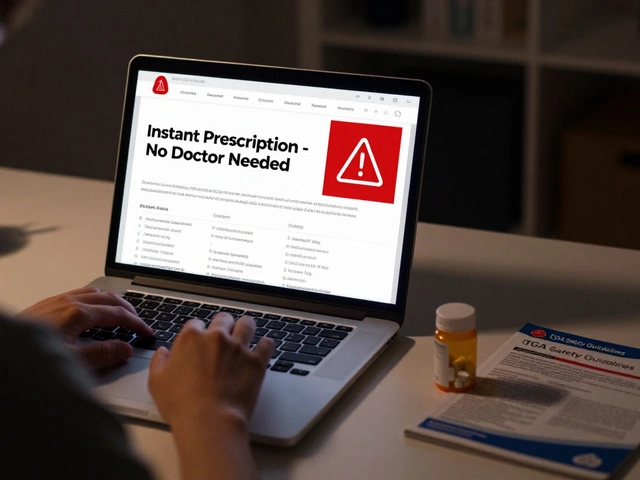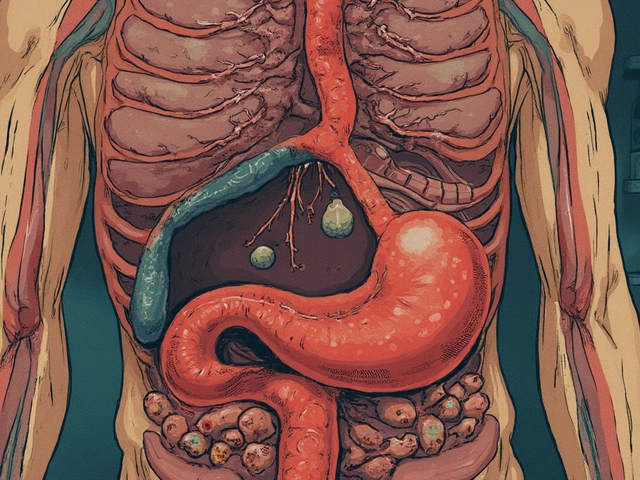Ever wondered if a therapist’s couch is reserved just for people with a mental illness? Imagine a world where only people with broken bones saw doctors. Sounds ridiculous, right? Yet, with therapy, there’s this weird idea floating around that unless you’re “sick,” you have no business being there. Shame, hesitation, and all-out myths get in the way. Real talk: You don’t have to wait for a diagnosis or hit rock bottom to ask for help. Therapy is about so much more. The truth doesn’t just challenge the old stereotype; it throws it out the window.
What Therapy Really Is (and Who It’s For)
Let’s bust the myth right out of the gate: therapy isn’t only for mental illness. The American Psychological Association says over 32% of people who see a therapist have no formal diagnosis. They come for stress, life changes, family drama, tough work environments, or even to grow personally. Regular people—students, parents, workers, retirees—walk through that door just wanting to learn life skills, break old habits, or unload some emotional weight. There’s no secret password or gatekeeper.
Think of therapy like going to the gym. You don’t need to be overweight or sick to want to be healthier or stronger. The same logic applies to your mind. People who want to communicate better, manage stress, improve relationships, or grow their confidence all go to therapy. Couples often see therapists before getting married, not because their relationship is “broken,” but to build stronger foundations. In fact, a 2023 survey by the Pew Research Center found 60% of therapy clients sought help for self-improvement or dealing with life transitions, not mental disorders.
Here’s another misconception—therapy is just talking about your childhood. While it’s true, exploring the past can help, therapy is much more action-oriented these days. Therapists teach tools, strategies, and mindsets you can use immediately. Ever tried to break a bad habit, like doomscrolling social media at 2 a.m., and failed on your own? Therapy tackles these real-life challenges, too. You’ll come out with homework, new frameworks, or even skills to say “no” when you mean it.
Let’s add another layer: therapy can even be proactive. Olympic athletes see sports psychologists not because they’re mentally unwell, but to boost performance and keep pressure in check. Leaders and CEOs use therapy or coaching for sharper decision-making. Sometimes, therapy is like tuning up a car before a cross-country trip—you’re making sure things run smoothly, not waiting for a breakdown. You get to work on emotional fitness before a crisis flares up.
Therapy isn’t a luxury for the elite or a last-resort lifeline. It’s more like a regular tool for life—no different than going to your doctor for a physical check-up or seeing a personal trainer for health. The stigma is fading, but if you’re still worried, over 20% of Americans received mental health support in 2024, and those numbers keep growing each year. Turns out, lots of us are tired of handling things alone.
Why Therapy Isn’t Just About Diagnoses: Beyond Labels
The idea that therapy is only for diagnosed mental illnesses hangs around like a stubborn cold. But look at how life really works. When people face breakups, divorce, job loss, infertility, or parenting struggles, many times they’re not “mentally ill”—they’re, well, human. Stress, grief, and burnout don’t always fit tidy boxes on a form. Yet they can tear at your quality of life just as much as depression or anxiety can.
One Harvard study from 2022 showed that 7 out of 10 therapy clients learned skills to handle everyday problems—like managing anger at work or coping with aging parents—none of which required a diagnosis. It’s like going to a swimming coach after a near-drowning scare. You don’t have to be an Olympic hopeful or have a lung problem; you just want to feel safer and more capable the next time you hit the pool.
Therapy focuses on teaching problem-solving, emotional regulation, better communication, and resilience. For people trapped in “overthinking mode,” these aren’t just nice-to-haves; they’re essential for functioning. Techniques like cognitive-behavioral therapy (CBT) help you break the cycle of negative thoughts and reactions—something that’s handy for anyone with a pulse, not just those with a diagnosis.
Consider the day-to-day struggles that pull people to a therapist: tight chest and racing thoughts before a big presentation, feeling lost after a move to a new city, sudden mood swings in menopause, or trouble setting boundaries with overbearing family. These are real, meaningful issues, but you probably won’t find them listed in a handbook of mental illnesses. Still, therapy helps people handle each of them without judgment or medication unless truly needed.
Therapists themselves often say their favorite work isn’t “fixing broken people”—it’s helping regular people build better lives. If you talk to a therapist off the record (and I had a coffee with one last year), many admit most of their clients show up not with clear-cut diagnoses, but with messy, everyday stressors or a desire to tune up their lives. They work with you to understand what’s up, what you want, and how to get there. No labels needed.
Here’s a quick reality check. The Diagnostic and Statistical Manual of Mental Disorders (DSM-5)—that big book of “official” mental illnesses—contains hundreds of diagnoses. But real life isn’t neat or clear-cut. Some folks feel “off,” but don’t meet any criteria. Others know things could be better but can’t say what’s wrong. Therapy serves them, too.

The Different Faces of Therapy: What Really Happens Inside
If the word “therapy” makes you think of stuffy offices and endless conversations about your mother, time to update the picture. Today’s therapy comes in many shapes. There’s traditional talk therapy, sure, but also expressive arts, mindfulness, EMDR (eye movement desensitization and reprocessing) for trauma, and practical solution-focused work. There’s couples therapy, group support, workplace coaching, and even online sessions you can do from your couch. It’s not all about the past—sometimes, it’s about skills for the now.
Want to get more specific? Here’s what therapy might offer someone without an illness:
- Building resilience. Learning to bounce back after setbacks, which is key for career changes, parenting, or even friendship drama.
- Improving communication. If you’ve ever left a conversation and thought, “Why didn’t I say that?” therapy can help you find your voice, especially with people who push your buttons.
- Managing change. Left home for college or sent your kid off to kindergarten? These transitions mess with your head. Therapy gives you a space to process and adapt.
- Setting boundaries. Maybe you lose sleep because you can’t say “no.” Therapists can arm you with scripts and confidence to hold your ground.
- Reducing stress. From breathwork to time management skills, therapists offer tried-and-true science-backed techniques to keep your nervous system in check.
Real-world stats back it up. Studies published in the Journal of Consulting and Clinical Psychology show therapy improves quality of life for people with AND without mental illness. For example, research from 2023 found people with “no formal diagnosis” who went for 8–12 sessions reported 35% lower stress, 48% improvement in relationships, and 63% increased job satisfaction after therapy.
| Common Reasons People Seek Therapy | % Without Mental Illness | % With Mental Illness |
|---|---|---|
| Stress from work/life | 40 | 22 |
| Improving communication skills | 32 | 15 |
| Relationship issues | 36 | 21 |
| Anxiety/depression symptoms | 18 | 76 |
Therapy sessions aren’t about judging you or handing out diagnoses like candy. It’s about what you want to work on. You drive the car. The therapist’s job? Help you see blind spots, manage traffic, and tune up your route. There’s no pressure to “prove” something is wrong. If you want to perform better, feel lighter, or handle life with more skill, that’s enough.
Plus, therapy isn’t always expensive or full of red tape. Many employers, colleges, and community centers offer low-cost or free access. Virtual therapy (hello, pajamas) opened new doors after 2020, making it easy to try a session without worrying about a waiting room.
How to Tell If Therapy Might Help You (Even If You Feel "Fine")
So do you need a diagnosis to see a therapist? Not a chance. Here are some signs therapy might be a great fit, even if you consider yourself “mentally healthy”:
- You’re stressed, overwhelmed, or anxious more than you like.
- You keep hitting the same wall in relationships or work.
- Sleep is getting tricky—either too much or too little.
- You’re facing big changes (new city, job loss, parenthood, divorce).
- Old, unhelpful habits won’t quit, and willpower isn’t cutting it.
- You wish you spoke up for yourself more, but it’s hard.
- Family dynamics leave you frustrated or drained.
- You want tools to manage life, not just vent about it.
If any of these land, that’s enough of a reason. The bar isn’t “something must be wrong with me”—it’s, “can I get more out of life?” It’s like calling a plumber, not because the pipes burst, but because they’re noisy and you want peace of mind. A therapist is your go-to troubleshooter—not because you’re broken, but because you want life to run smoother.
Tips if you’re curious: check the credentials of therapists—most are happy to offer a free introductory call. Ask about their style. You can “shop around” for the right fit, and it’s totally normal not to click with the first try. If you want, try guided self-help apps, group coaching, or community resources that focus on skills and support, often run by qualified professionals.
Therapy doesn’t have to be forever, either. Many people see a therapist for a short burst—maybe for a few weeks or months to get through a tough patch. Others “pop in” every so often, just like a regular check-up. Both approaches work.
What matters most? Taking a step, whether or not life is falling apart. Therapy is for regular folks, not just those with a “label.” The next time someone says, “Why are you seeing a therapist? You seem fine!” just smile. You know the secret: it’s never about labels—it’s about living your best life, with a little help.





Write a comment